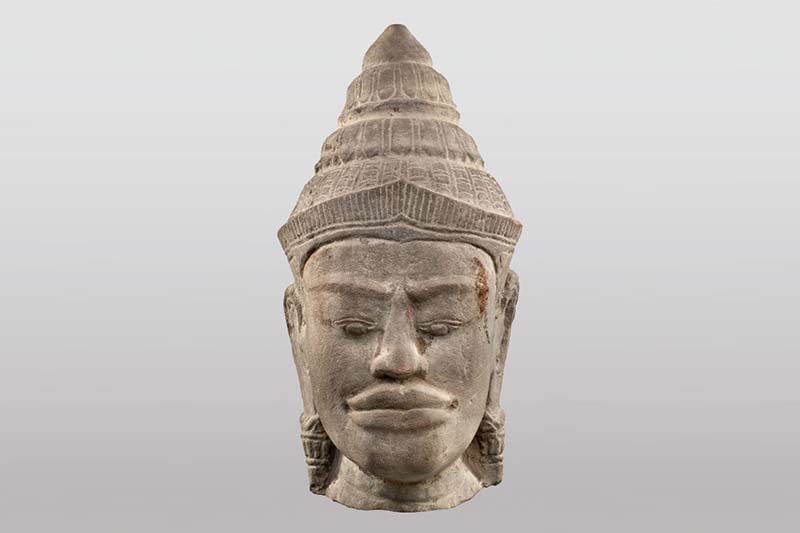The art of Cambodia
South East Asian Art Collection
Cambodia has been the most significant cultural centre of Southeast Asia from the 9th until the 13th century AD. During the Khmer Empire, it extended from its current borders until South Vietnam, Laos and Central Thailand. The Khmer organised themselves politically and culturally after the Indian model. Their art is divided into three periods based on their capital city, Angkor, as follows: Pre-Angkor (6th-8th century AD), Transitional (9th century AD)
and Angkor Period (9th-13th century AD). In order to assert their great power, the Khmer built gigantic stone temples on pyramid-shaped gradational bases (ziggurat). These temples were adorned with numerous reliefs and sculptures depicting deities from the Buddhist, Hindu and local animistic religion and history.
The temples soon perished in the lush jungle vegetation, following the moving of the capital to Phnom Penh in the 15th century, which also marked the end of the Khmer Empire. They were rediscovered by French researchers, while since 2004 they have been placed under UNESCO protection, being recognised as masterpieces of world architecture.
Buddha head


